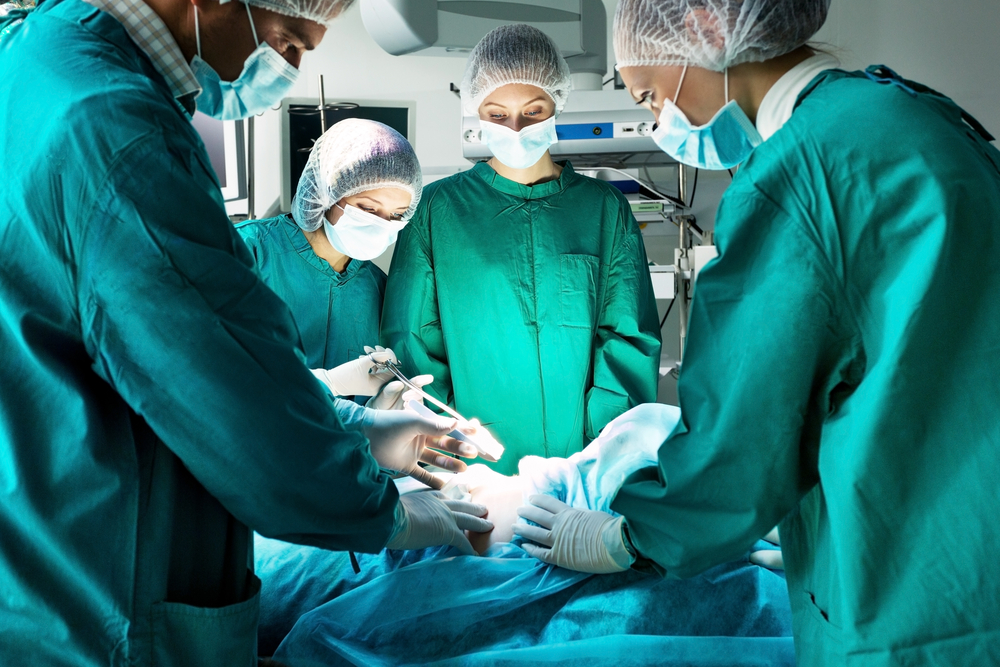ETSS, Minimally Invasive Surgery, Seen to Largely Treat Cushing’s Disease
Written by |

Kotin/Shutterstock
Endoscopic transsphenoidal surgery (ETSS), a minimally invasive procedure that allows surgeons to remove pituitary tumors in people with Cushing’s disease, is associated with good remission rates, according to a recent study.
The study, “Outcomes of endoscopic transsphenoidal surgery for Cushing’s disease,” was published in the journal BMC Endocrine Disorders.
Though considered the first-line treatment for Cushing’s disease, transsphenoidal surgery has been associated with high recurrence rates. Recently ETSS, a less invasive way of removing tumors of the pituitary gland at the base of the brain, has been increasingly used.
A team of researchers from Bulgaria and Ireland assessed the remission rates and post-surgery complications of ETSS in a group of Cushing’s patients.
Analyses were based on data from 43 ETSS surgeries performed by a single surgeon in 39 patients (30 women and nine men, with a median age of 37) between January 2012 and February 2020.
Of these 39 people, 28 (72%) had high blood pressure and 11 (28%) had type 2 diabetes. All had disease symptoms for a median of two years (24 months).
An MRI scan performed before surgery revealed that 22 (56%) patients had an adenoma, while no tumor was evident in the remaining 17 (44%). Among those with an adenoma, most (82%) had smaller tumors that measured less than one centimeter in size, and are usually called microadenomas.
Inferior petrosal sinus sampling (IPSS) — an established diagnostic technique used to detect tumors in the pituitary gland — was performed in 33 (85%) patients.
Patients received hydrocortisone on days one and two after surgery, and their blood cortisol levels were measured on the morning of day three. Of note, cortisol is the hormone that is overproduced in people with Cushing’s disease, due to the presence of a tumor in the pituitary gland.
Following ETSS, researchers focused on assessing patients’ remission rates. Post-surgery remission was considered as a morning blood cortisol level under 138 nanomoles per liter (nmol/L) seven days after surgery (standard criteria), or less than 50 nmol/L three days after surgery (strict criteria).
Using standard criteria, the remission rates for an initial ETSS were 87% in the overall patient population, and 89% when excluding those who had macroadenomas (larger tumors, more than one centimeter in size).
After including the outcomes of three patients needing an early repeat ETSS due to persistently high cortisol levels, the overall remission rate using standard criteria rose to 92% overall, and to 94% when excluding those with macroadenomas.
Under strict criteria, post-surgery remission rates were 58% in the overall population, and 62% in the subset without macroadenomas. These remission rates also increased to 61% and 65%, respectively, after investigators included data from patients who had a repeat early surgery.
Remission rates after this early, second ETSS were 67% (two patients, standard criteria), and 33% (one patient, strict criteria).
Post-surgical complications were few, with no cases of visual deterioration, meningitis, or cerebral spinal fluid leakage. Temporary diabetes insipidus — a fluid imbalance disorder — occurred in 13 (33%) patients after a first ETSS. Permanent diabetes insipidus was reported in nine (23%) patients.
During follow-up, one patient with a macroadenoma had disease recurrence and underwent a second ETSS 13 months after the first surgery.
Nine (27%) patients showed a complete recovery of pituitary gland function within three to 27 months after ETSS. One patient died five weeks after surgery; an autopsy found bilateral hemorrhagic adrenal necrosis.
Researchers acknowledged their study had several limitations, including its small size, short follow-up period for recurrence rates, and incomplete post-surgery data.
Still, they concluded that “endoscopic transsphenoidal surgery produces satisfactory remission rates for the primary treatment of CD [Cushing’s disease], with higher remission rates for microadenomas.”





